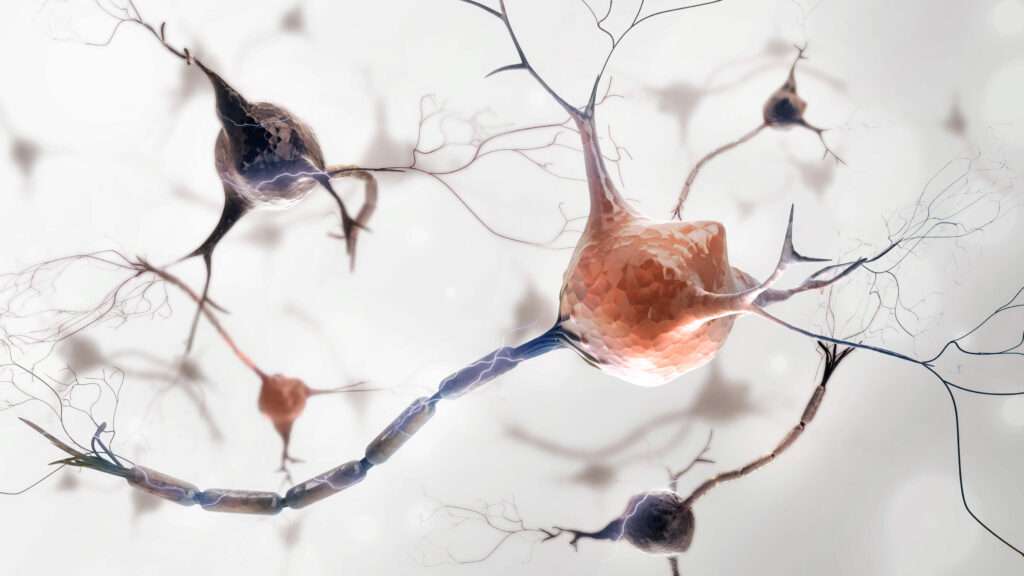Krabbe Disease (GLD)

Krabbe Disease (GLD)
Contact Us
Related Videos :
Frequently Asked Questions (FAQ) :
Krabbe Disease, also known as Globoid Cell Leukodystrophy (GLD), is a rare and inherited neurodegenerative disorder caused by a deficiency of the enzyme galactocerebrosidase (GALC). This enzyme is essential for breaking down certain fats in the nervous system. The buildup of these fats damages the myelin sheath, which insulates nerves, leading to severe neurological symptoms.
Symptoms vary depending on the age of onset:
- Infantile-onset (most common): Irritability, feeding difficulties, muscle stiffness, developmental delays, and seizures.
- Late-onset (childhood or adulthood): Vision loss, walking difficulties, muscle weakness, and cognitive decline.
The disease typically progresses rapidly, especially in infants, leading to severe disability or death within a few years without treatment.
Diagnosis involves several steps:
- Enzyme test: Measures the activity of GALC in blood or skin cells.
- Genetic testing: Identifies mutations in the GALC gene.
- MRI: Reveals abnormalities in the brain’s white matter.
- Nerve conduction studies: Evaluate the speed and efficiency of nerve signals.
Early diagnosis is crucial, especially for newborns, as it may allow for early interventions.

What is Krabbe Disease (GLD)
Krabbe disease is a genetic disorder that leads to the progressive destruction of nerve cells in the brain and peripheral nervous system. It typically presents in early childhood but can vary in its severity and age of onset. The condition primarily affects the myelin sheath — a protective covering around nerve fibers — leading to severe neurological and developmental impairments.
Types of Krabbe Disease
There are two primary types of Krabbe disease:
1. Infantile-onset Krabbe Disease
- Age of onset: Typically diagnosed before the age of 6 months.
- Symptoms: Rapid and severe progression of neurological symptoms, including developmental delay, muscle stiffness, irritability, and loss of vision.
- Prognosis: If untreated, infantile Krabbe disease can lead to death within the first two years of life.
2. Late-onset Krabbe Disease
- Age of onset: Symptoms appear after infancy, often in childhood or adolescence.
- Symptoms: May include walking difficulties, muscle weakness, and speech problems. The progression is slower compared to the infantile form.
- Prognosis: With early diagnosis and intervention, patients may have a longer life expectancy.
Causes of Krabbe Disease
Krabbe disease is caused by mutations in the GALC gene, which provides instructions for making the enzyme galactocerebrosidase. This enzyme is responsible for breaking down specific fats in the body. When it is deficient or absent, toxic substances build up, leading to nerve damage.
The disease is inherited in an autosomal recessive pattern, meaning that both parents must carry the defective gene for their child to inherit the condition.
Symptoms of Krabbe Disease
Krabbe disease symptoms can vary greatly depending on the type and age of onset. Common symptoms include:
- Developmental delay in infants (e.g., inability to sit or crawl)
- Muscle stiffness (spasticity)
- Irritability and frequent crying
- Loss of motor skills (e.g., inability to move arms or legs)
- Severe seizures
- Vision problems (e.g., blindness)
- Loss of cognitive function
In late-onset cases, symptoms may develop more gradually, with difficulty walking, muscle weakness, and speech difficulties being the primary signs.
Diagnosis of Krabbe Disease
Diagnosing Krabbe disease typically involves a combination of clinical examination, family history, and laboratory tests. The key diagnostic tests include:
- Genetic testing to identify mutations in the GALC gene.
- Enzyme assay to measure the activity of galactocerebrosidase in blood or skin cells.
- MRI scans to assess damage to the brain and nervous system.
- Nerve conduction tests to evaluate nerve function.
Treatment of Krabbe Disease
Currently, there is no cure for Krabbe disease, but several treatment options can help manage the symptoms and slow disease progression:
1. Stem Cell Transplant (Hematopoietic Stem Cell Transplantation – HSCT)
- Procedure: A stem cell transplant, also known as bone marrow transplant (BMT), is the most effective treatment option when performed early (ideally before the onset of symptoms in infants).
- How it helps: Stem cells can help produce the missing enzyme galactocerebrosidase, improving myelin production and slowing down neurological damage.
- Success rate: Early intervention has shown to significantly improve survival rates and quality of life.
2. Enzyme Replacement Therapy (ERT)
- Procedure: ERT involves the regular infusion of the missing enzyme, although this treatment is generally more effective for later-onset forms of Krabbe disease.
- Limitation: ERT is not as effective as stem cell transplant for early-onset Krabbe disease.
Why Choose Dr. Rahul Bhargava for Krabbe Disease Treatment?
Dr. Rahul Bhargava is a renowned hematologist and stem cell transplant specialist in India, with vast experience in treating rare genetic disorders like Krabbe disease. Here’s why Dr. Bhargava is a trusted expert:
- Expertise in Hematology and Stem Cell Therapy: Dr. Bhargava is a pioneer in hematology and has helped numerous patients with rare genetic disorders through advanced therapies like stem cell transplants.
- Personalized Care: Dr. Bhargava provides personalized treatment plans tailored to each patient’s specific needs, ensuring the best possible outcomes.
- International Reputation: With over a decade of experience, Dr. Bhargava has treated patients from around the world, earning a reputation for excellence in the field.
- State-of-the-art Facilities: Dr. Bhargava’s clinic in India is equipped with cutting-edge medical technology and offers world-class care for Krabbe disease patients.
Cost of Krabbe Disease Treatment in India
India offers affordable and high-quality treatment for Krabbe disease. The costs are significantly lower than in many Western countries:
- Stem Cell Transplant (HSCT):
- INR: ₹15,00,000 – ₹30,00,000
- USD: $20,000 – $40,000
- Enzyme Replacement Therapy (ERT):
- INR: ₹7,50,000 – ₹10,00,000 per year
- USD: $10,000 – $15,000 per year
- Diagnostic Testing (Genetic and Enzyme Screening):
- INR: ₹40,000 – ₹1,00,000
- USD: $500 – $1,500
- Accommodation & Stay:
- INR: ₹1,500 – ₹5,000 per day
- USD: $20 – $60 per day